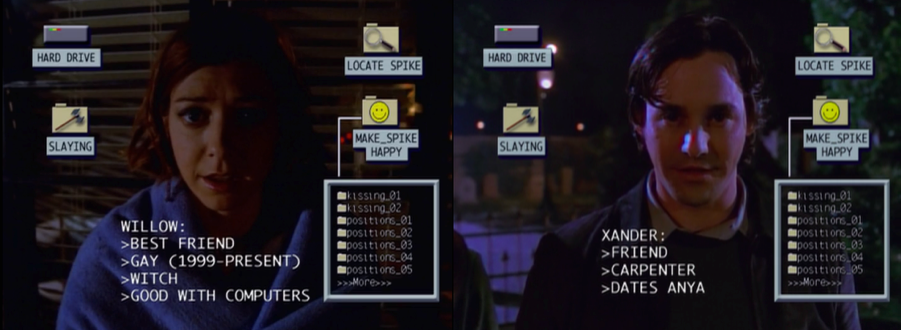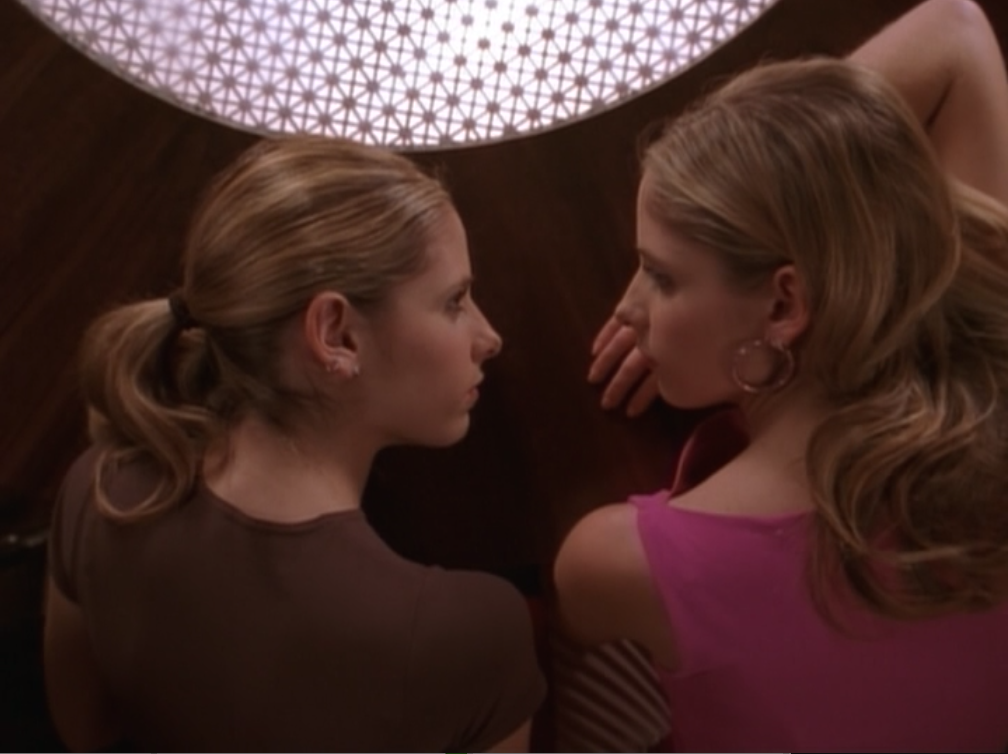Some say it's better than the real thing.”

With those words we are introduced to Buffybot, a robotic replica of everyone’s favorite Pointy-wielding, banter-spewing blond vampire slayer...
Manuel continuing our Artificial Intelligence theme week.
Joss Whedon’s Buffy the Vampire Slayer remains one of the best examples of how to use superpowers, monsters and villains as generative metaphors for such varied things as puberty, high school, sexual assault and the systemic misogyny that pervades our contemporary world. This latter issue is at the center of “Intervention” the 18th episode of Buffy’s fifth (and I’d argue best!) season. [more]
Spike, the bleach-blonde vampire who begrudgingly swoons over the eponymous slayer, has ordered a Buffy lookalike robot all for himself, one he’s been promised is, “ better than the real thing.” Better being a code word for “will do as you say”: Buffybot won’t talk back, and more importantly won’t (read: can’t) say no. It’s an intentionally problematic plot about female agency, one which is a staple of Whedon’s show. Buffybot’s creation is just as skeevy as it sounds. “I want to hurt you, but I can't resist the sinister attraction of your cold and muscular body” and “I could never [stake you]. I'm helpless against you, you fiend!” are just some of the lines he’s asked to be fed into her programming.
And yet, rather than make Buffybot a mere punchline (though there are plenty of those at her expense) or a mere plot mechanism through which to dissect these feminist quandaries, Buffybot is sketched out as a character in her own right. This is nowhere more evident than in the split-second moments where we’re shown the world through her eyes. The show, it turns out, is much more generous towards her than Warren, her creator, and Spike, her erstwhile master, imbuing her with an interiority her characterization as a robot would seemingly invalidate.

Allow first, of course, a cursory moment to balk at the 90s icons that make up Buffybot’s interface. But then, notice the attempt by Jane Espenson (who wrote so many standout Buffy episodes during its seven season run) to allow a peak at Buffybot’s interiority. Yes, her mannerisms and dialogue are rather stilted (Buffy balks at the notion that none of her friends were able to tell this robot from the “real thing” standing now in front of them) but she has an awareness and a level of agency that necessarily speaks back to what she was designed to do.
 “At least it’s not a very good copy. I mean, look at it!”
“At least it’s not a very good copy. I mean, look at it!”
Of course, it is precisely Buffybot’s close resemblance what allows Buffy to visit Spike pretending to be her robotic counterpart to both thank him for not revealing ??? but also remind us that A.I. stories function as parables for fears and desires we wish we could harness and control at will only to find that very impulse a futile one.
Oh, and did I mention Buffybot is just another example of Sarah Michelle Gellar’s endless comedic talents? Goes to show you that it takes “the real thing” to pull off artificial intelligence, no?